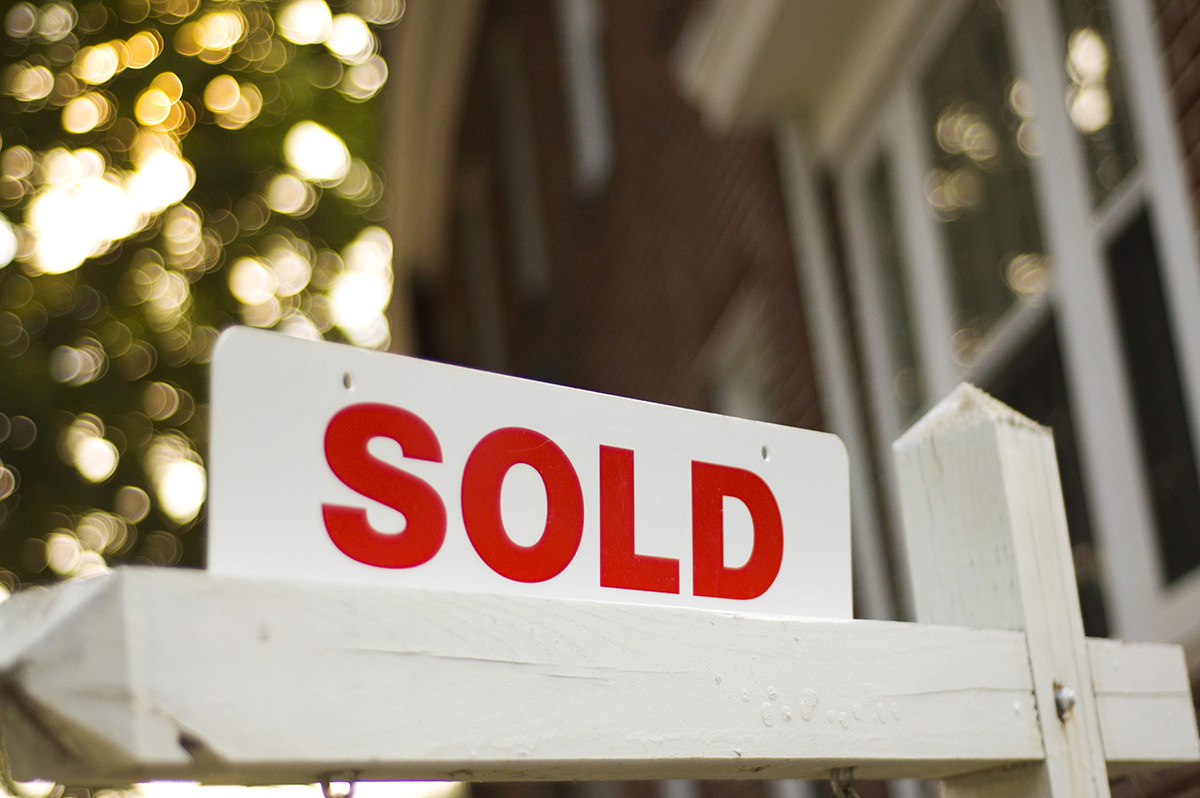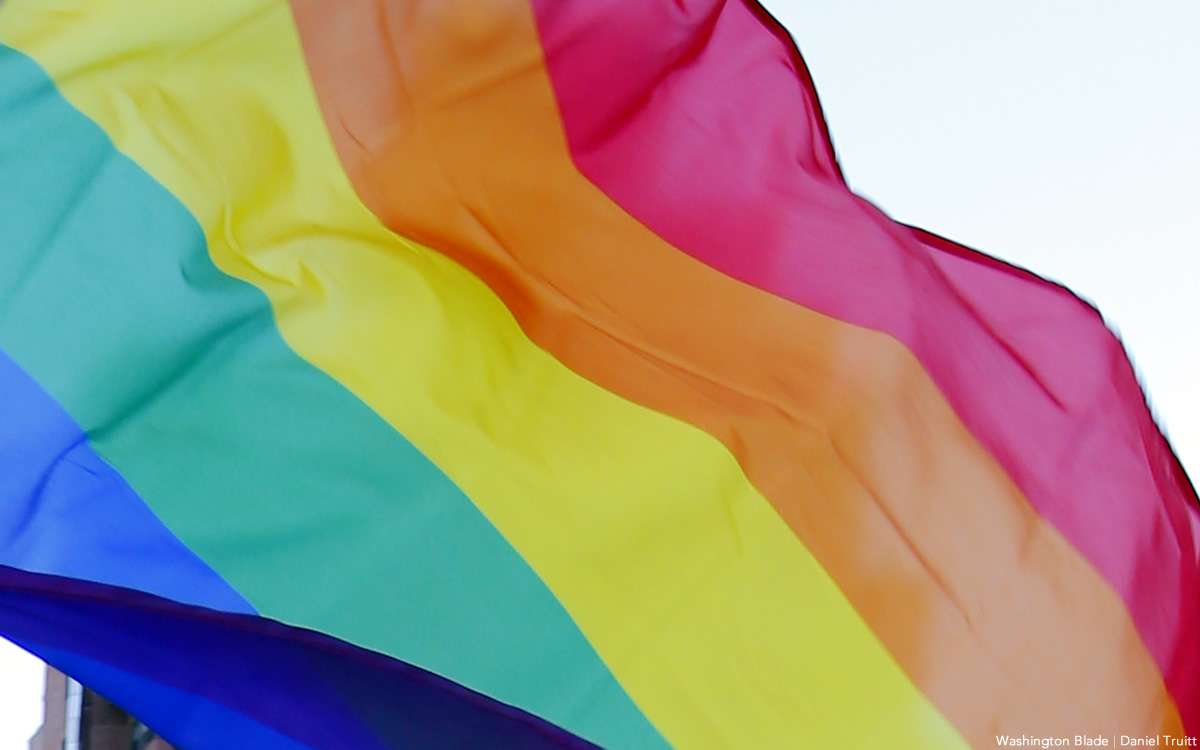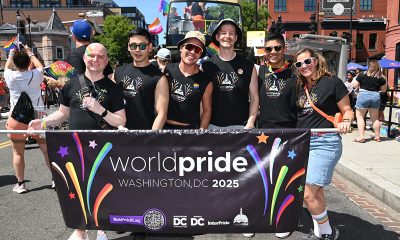Real Estate
Looking for vacation homes during Memorial Day weekend
A busy, strategic time in the housing market

Memorial Day weekend, a time to honor the sacrifices of the men and women of the U.S. Armed Forces, also marks the unofficial start of summer. Beyond its significance as a day of remembrance, it has become a prime period for the real estate market. The long weekend provides a unique opportunity for home buyers and sellers, making it one of the busiest and most strategic times in the housing market.
Memorial Day weekend is often a time when people head to the beach, the country, or the mountains for relaxation and to join in the local festivities. This long weekend offers a break from routine, a chance to honor those who have served, and an opportunity to enjoy the beginning of warmer weather.
For real estate agents, however, Memorial Day weekend can be a blend of work and leisure, especially in resort communities where the real estate market is particularly active during this time.
The influx of visitors to these destinations often includes prospective buyers who are considering purchasing vacation homes or investment properties. As a result, real estate agents in these areas might find themselves balancing work commitments with personal downtime.
We are keenly aware that the long weekend brings a surge in potential clients. Agents joke among themselves about business being slow until they make plans to go out of town. Open houses and community home tours are often scheduled to coincide with the holiday, taking advantage of the increased foot traffic.
Due to constantly improving technology, real estate agents can effectively manage their time and resources even during busy holiday weekends. Virtual tours, online listings, and digital marketing campaigns enable agents to reach a broad audience without always being physically present. Technology also allows agents to stay connected with clients and respond to inquiries promptly, ensuring that the clients do not miss out on potential sales opportunities.
Often, agents licensed in the DMV are expanding their territories by becoming licensed in West Virginia, Pennsylvania, and Delaware. Writing offers while on vacation has become the norm. Social media accounts can highlight special listings and open house events, and agents can also post pictures and descriptions of amenities in the towns they are visiting, attracting interested buyers who are in the area for the weekend.
The vibrant atmosphere of vacation getaway towns during Memorial Day weekend also provides a unique opportunity for networking and relationship-building. Agents can meet potential clients in a casual setting, forging connections that might lead to new business opportunities. They can also form relationships with other agents and create partnerships to help current and future clients find leisure homes.
The appeal of owning a place by the water, for example, is often strongest during the summer months, when the weather is inviting and the potential for rental income is high. Real estate agents who serve beach towns such as Ocean City, Md., Virginia Beach, Va., or Rehoboth Beach, Del., often mix business with pleasure as they seek out new clients.
Alternatively, if the relaxed life in the country is more to your liking, places such as The Amish area of Lancaster County, Pa. may be for you. Charles Town, W.Va., and Ashland, Va. have a robust military history and may be what you’re looking to enjoy. If mountains and lakes are more your style, the Blue Ridge mountains of Virginia, the Appalachians of West Virginia, or Deep Creek Lake, Md., may fit the bill, so let’s look at a few properties on the market today.
In Ocean City, you can find an oceanfront, one-bedroom condominium with beach and sunset views in a short-term rental building for $439,900. As you can imagine, it already has four weeks booked for the summer.
The historic district of Charles Town, W.Va., offers a 3,000-square-foot Victorian home built in 1890. It has five bedrooms, two bathrooms, 10’ high ceilings, original pocket doors, inlaid floors, and central air conditioning for $159,900. What’s the catch? It requires a complete renovation, but what a wonderful project it could be for weekend warriors.
Stretch your budget a bit more and you can own a 4,000-square-foot chalet with mountain views on both sides in Front Royal, Va. For less than $700,000, you will get four bedrooms and three baths, nearly two acres of land, and low-maintenance siding.
While many people flock to nearby vacation spots purely for relaxation, real estate agents often find themselves working diligently to learn about different areas and capitalize on the increased interest in local properties. By doing so, they can help clients find their dream homes, whether for retirement, short getaways, or investment potential.
Valerie M. Blake is a licensed associate broker in D.C., Maryland, and Virginia with RLAH Real Estate / @properties. Call or text her at 202-246-8602, email her via DCHomeQuest.com, or follow her on Facebook at TheRealst8ofAffairs.

One of the most popular questions at our home buyer seminars is “What are the down payment assistance or first-time homebuyer programs available where I live?” There are various programs sponsored by multiple jurisdictions with the help of local banks, federal grants and loans as well. Knowledgeable lenders in the area will direct their eligible borrowers to these programs when a home purchase is being considered. Some of the programs are frequently mentioned in the local news: HPAP, EAHP, and DC Open Doors. There are also other options such as:
• FHLB grant for down payment assistance and/or closing costs
• Bank portfolio loans such as the Sandy Spring Bank loan, which can be 3% of the home purchase price – paired with a 97% first trust loan which is 100% financing at market rates
• Citibank Home Run
• Bank of America Down Payment Grant or Home Grant
• Chase Dream Maker Grant
• DC Open Doors – (DC Purchases only)
• HPAP/EAHP (for DC purchases only, when funds are available.)
All of these programs, grants, and loans come with guidelines and regulations, which may include income limits, household size limitations, geographic boundaries, homebuyer education classes, occupying the home as a primary residence, and funds availability. Some are easier to use and implement than others. Others may be available but can take 60 or more days to close on a home purchase, where another buyer may offer a seller a 30-day close. Some of these options may be stacked together to help build the buyer’s purchasing power.
In many cases they are worth exploring, and “seeing if the shoe fits.” A knowledgeable lender will be able to help a prospective home buyer to “try on these shoes” and see if there is a good fit. The best local Realtors and lenders will help a buyer understand which can be used at the time of purchase, and what types of documentation are necessary for each instance.
In our experience, the programs are there for those who need it, and in many cases make the difference between what a buyer has available to bring to the table, and what they need to get the “Sold” sign put out on the lawn, and the keys in their hand. Some buyers may decide to investigate these options and go without the program or the available funds anyway. Perhaps the interest rate is higher when using a program as opposed to going without it, meaning the monthly payment will be more when you use these programs. Each buyer has their own criteria of what makes a good fit for them. As with anything, “Mama said you gotta shop around.” It’s worth considering the various down payment & first time homebuyer assistance options available when looking to purchase and deciding which option(s) provide the best fit.
Don’t hesitate to reach out for more information.
Joseph Hudson is a referral agent with Metro Referrals. Reach him at [email protected] or 703-587-0597. Tina Del Casale is a mortgage banker at Sandy Spring Bank. Reach her at 301-850-1326.

The phrase “totally radical” came of age in the 1980s and was defined as cool, wonderful, or awesome. Its synonym, wicked, can be found in nearly all Ben Affleck movies and a cry of “Excellent!” will bring back memories of an adventure had by Bill (Alex Winter) and Ted (Keanu Reeves) in 1989.
Although some people are not ready for cocooning yet, homeownership is still a cornerstone of financial strength and wealth building. For LGBTQ individuals, owning a home can provide a sense of economic security and a sanctuary where they can express their personalities freely and without fear of discrimination or harassment.
Whether house, condominium, or cooperative apartment, owning a place to chill allows you to build a legacy and provide for future generations. It offers the stability needed to plan for the future, whether that involves raising a family, supporting aging parents, or ensuring a spouse’s or partner’s financial security.
Homeowners are also more likely to invest in their communities, fostering strong, inclusive, bitchin’ neighborhoods. For many LGBTQ people, a home is “In the District,” which prides itself on diversity. Homeownership allows individuals to create personal spaces that reflect their identities and values, contribute to the city’s rich cultural tapestry, support local businesses, and participate in community events and governance.
The journey toward homeownership for gay individuals has evolved over the years, reflecting broader societal changes and the struggle for LGBTQ rights. The stark contrast between the ’80s and now highlights the progress made, the challenges that still exist, and future uncertainties brought forth by the space cadets in our political system.
In the 1980s, homeownership for gay people was bogus. The decade was marked by lame, pervasive discrimination and limited legal protections. The HIV/AIDS epidemic further stigmatized the gay community, intensifying societal prejudices. This climate of fear and hostility permeated various aspects of life, including the housing market.
Gay individuals faced overt discrimination from landlords, real estate agents, and mortgage lenders, even in the rental market. It was not uncommon for same-sex couples to be denied housing simply because of their sexual orientation. Even in the late ’90s I had clients looking for homes in Prince William County, Va., who had to hightail it out of an open house when told to take a hike. I kid you not!
Financial institutions were often unwilling to grant mortgages to same-sex couples or openly gay individuals. When they did, the terms were often less favorable than those offered to heterosexual couples. This made the dream of homeownership significantly harder to achieve, even though DINKs (dual income, no kids) tended to have more household income than so-called “traditional” families.
Additionally, the lack of legal recognition for same-sex relationships posed harsh challenges. Without the ability to marry, same-sex couples faced difficulties in co-owning property and ensuring that their partner had legal rights to the home. Estate planning was complicated, as inheritance laws did not recognize same-sex partners, potentially leading to the loss of a home upon a partner’s death.
The landmark Supreme Court decision in Obergefell v. Hodges, which legalized same-sex marriage nationwide, was a fantabulous moment. This ruling provided same-sex couples with the same legal rights as heterosexual couples, including the ability to jointly own property and inherit without complication.
Anti-discrimination laws have also evolved. The definition of sex under the Federal Fair Housing Act has been expanded to include sexual orientation and gender identity, as have protected classes in Maryland and Virginia. The District has taken that a step further; our protected classes also include gender expression and personal appearance.
Organizations like the DC Center for the LGBT Community and the National Association of Gay and Lesbian Real Estate Professionals (NAGLREP) offer resources and advocacy for LGBTQ+ homebuyers. These organizations provide educational workshops, networking opportunities, and support to navigate the housing market.
The advancement of homeownership rights for gay people is a testament to the righteous resilience and determination of the LGBTQ+ community. As society continues to strive for equality, it is essential to address the remaining challenges to ensure that everyone, regardless of their sexual orientation or gender identity, can achieve the goal of homeownership.
In 2024, the only limitations on owning a home are finding one and being able to afford it. Pride weekend is a great time to go to open houses. You’ll probably be walking right by several.
But if you’re not ready yet and just feel like getting your ’80s jams on, grab your disco balls and check out the Totally Tubular Festival at The Anthem at The Wharf on July 14.I’ll be Desperately Seeking Susan and will, as they used to say in the ’70s, catch you on the flip flop.
Real Estate
Decorating tips for Pride in D.C.
Perfect time to add a dash of creativity to your living space

As the vibrant LGBTQ community in Washington, D.C., gears up for the much-anticipated Pride celebrations on June 8 and June 9, it’s the perfect time to add a splash of color and a dash of creativity to your living space. Normally, I know you’re used to reading more educational and serious articles in this space. In the spirit of D.C. Pride this year, I thought a bit of levity would be welcomed.
Whether you’re in a cozy condo, a spacious home, or a rental apartment, here are some fabulous ways to zhuzh up your indoors and outdoors with Pride-themed décor.
Indoors: Celebrate with Style
1. Colorful Accents Everywhere
Transform your living area into a festive space by incorporating the colors of the rainbow. Here’s how:
• Throw Pillows and Blankets: Swap out your regular throw pillows and blankets for those in bright, rainbow colors. This simple change can make your space instantly feel more festive.
• Pride Flags: Hang LGBTQ Pride flags on your walls or in your windows. The traditional rainbow flag is a staple, but also consider including other flags like the bisexual, transgender, or pansexual flags to celebrate the diversity of our community.
• Art and Posters: Display Pride-themed art or inspirational quotes from LGBTQ+ icons. Local artists often have prints and posters that reflect the spirit of Pride.
2. Light It Up. Lighting can set the mood for any celebration:
• Fairy Lights: Drape rainbow-colored fairy lights around your living room or bedroom for a magical touch.
• LED Candles: Use multi-colored LED candles to safely add a warm glow to your space.
3. Tabletop Décor. Celebrate at every meal with:
• Tablecloths and Runners: A vibrant rainbow tablecloth or runner can turn every dining experience into a celebration.
• Centerpieces: Create centerpieces with flowers in hues of the rainbow, or use colorful glass bottles as vases.
4. DIY Pride Crafts. Get creative with DIY decorations:
• Rainbow Paper Chains: Make paper chains in rainbow colors and hang them across your rooms.
• Pride Mason Jars: Paint mason jars in rainbow stripes and use them to hold utensils or flowers.
Outdoors: A Festive Façade
1. Balcony or Patio Pride. If you have outdoor space, make it a part of the celebration:
• Rainbow Banners and Streamers: Decorate your balcony or patio railings with rainbow banners and streamers.
• Outdoor Flags: Fly a large Pride flag from your balcony or in your garden.
2. Welcoming Door Décor. Your front door can be a bold statement of support:
• Pride Wreath: Create or buy a wreath featuring rainbow colors or themed around different LGBTQ+ flags.
• Welcome Mats: Greet visitors with Pride-themed welcome mats.
3. Garden and Window Dressings. Let your garden or exterior windows echo your Pride:
• Window Decals: Use removable rainbow decals to decorate windows facing the street.
• Garden Flags: Place small rainbow or other LGBTQ+ flags throughout your garden or in plant pots on your porch.
4. Lighting the Night. Make your outdoor space shine:
• Solar Rainbow Lights: Use solar-powered lights in Pride colors to illuminate pathways or garden borders.
• Projection Lights: Project rainbow patterns or Pride flags onto your home’s exterior.
Community Engagement
1. Share the Spirit. Decorate your shared spaces if you’re in an apartment building:
• Bulletin Boards: Put up colorful notices or flyers announcing local Pride events.
• Community Areas: If possible, decorate communal areas with small flags or posters.
2. Local Pride. Support local LGBTQ businesses by buying decorations or craft supplies from them. This not only helps the community but also promotes local artists and crafters.
Safety and Considerations
• Check with your landlord or HOA: Before hanging decorations outside or in shared areas, make sure to check if there are any restrictions.
• Be Mindful of Neighbors: While celebrating Pride, ensure your decorations are respectful and mindful of your neighbors.
By decorating your home for Pride in Washington, D.C., you’re not just brightening up your living space; you’re showing your support and solidarity with the LGBTQ community. Let your Pride shine brightly, and make this year’s celebrations unforgettable!
Scott Bloom is owner and senior property manager, Columbia Property Management. For more information and resources, visit ColumbiaPM.com.
-
Autos2 days ago
All charged up: BMW i7 xDrive6
-
District of Columbia1 day ago
Bernie Delia, attorney, beloved Capital Pride organizer, dies at 68
-
U.S. Federal Courts5 days ago
Club Q shooter sentenced to life in prison for federal hate crimes
-
Africa3 days ago
Namibian High Court strikes down Apartheid-era sodomy laws

















